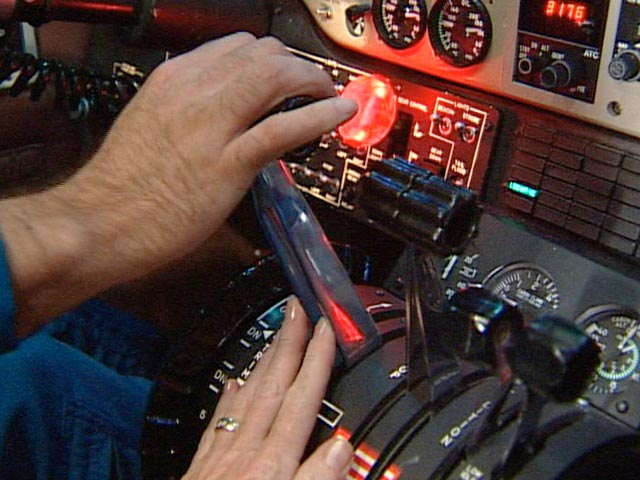A Pilot's Guide to Inflight Icing
Module III - In an Emergency
Recovery
Section: Wing Stall
Start This SectionWing Stall Recovery
A roll upset is the result of a full or partial wing stall. This is most likely to occur when the aircraft is flying at high angles of attack, typically at slower speeds. Wing stalls typically occur following a speed reduction or premature flap retraction.
To recover from an uncommanded roll or a wing stall, immediately reduce the angle of attack:
Lower the nose
Add power

Image from NTSB accident recreation

Ice contaminated wing
Wing Stall Recovery
Lower the nose
The quickest way to lower the angle of attack and reattach airflow is to firmly lower the nose and add power as necessary.
This will result in an altitude loss, but this must be accepted to regain control of the aircraft. It is better to lose a relatively small amount of altitude in a controlled manner than risk losing a great deal of altitude in an uncontrolled manner.

Pushing yoke forward
Related Information
Michael Hudson, Former EMB-120 Captain
Bill Rieke, NASA Research Pilot
Wing Stall Recovery
Lower the nose
This recovery procedure is different from the stall warning recovery that most pilots routinely practice. In training, you were probably taught to recover from incipient stalls with clean wings. In that training, one goal was to demonstrate minimal altitude loss. With an ice-contaminated wing, you may experience a full stall and you may need to take much more decisive action - including substantial pitch changes -- to recover from the stall.
A roll upset or wing stall with an ice-contaminated wing is an emergency situation. You must regain control of the aircraft immediately. Altitude loss is a secondary consideration.

Pushing yoke forward
Wing Stall Recovery
Add power
Add power to increase airspeed.
During a wing stall, adding power is generally desirable, but adding power without first lowering the nose will decrease the angle of attack very slowly until the aircraft is accelerated. Some aircraft may not have sufficient power to recover without lowering the nose.

Pushing throttles forward